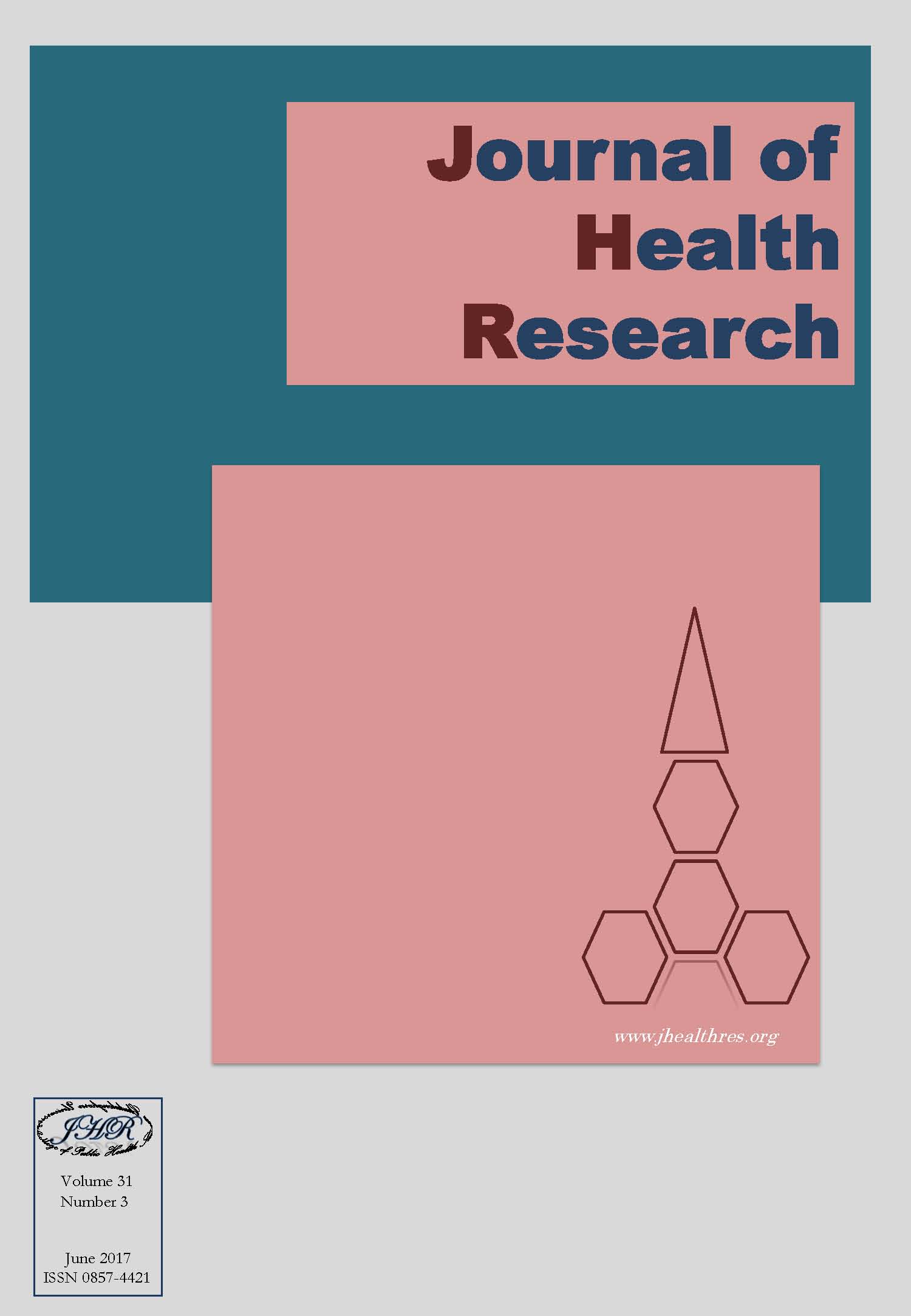Determinants of Diabetes Mellitus Type 2 Risk in Ron Phiboon Sub-District, Nakhon Si Thammarat Province, Thailand
Keywords:
Determinants, Diabetes risk, Diabetes mellitus type 2, ThailandAbstract
Background: Diabetes mellitus (DM) is a chronic metabolic disease resulting from diminished insulin production by pancreas (type 1) or the ineffective use of insulin by the body (type 2). Known risk factors for DM, especially DM type 2, include older age, obesity; unbalanced diet, physical inactivity, stress, family history, and genetic polymorphisms. Ron Phiboon district, Nakhon Si Thammarat province locates in the South of Thailand. According to data from provincial health office, the rate of DM per 100,000 people in Nakhon Si Thammarat Province in 2008 was 1150.7, whereas the rate in the same year, as reported by Diabetes clinic of Ron Phiboon hospital, was 1742 compared to 972 in the year 2004. The increased rates of DM patients in that area led to the investigation of DM risk factors, to add more information for DM risk mitigation. Thus, this study focused on investigation of determinants of DM type 2 risk among residents of 3 Moo Ban (villages) of Ron Phiboon sub-district, Nakhon Si Thammarat province, Thailand.
Methods: This unmatched case-control study aimed to compare the socioeconomic patterns between villagers with DM Type 2 (Cases, N=185) and those who had not been diagnosed with DM (controls, N=200). The data used were based on previous community-based studies in 2000 and 2008. The technique of Multiple Imputation (MI), with the Predictive Mean Matching (PMM, an imputation method used to prevent negative value after MI) was used to impute missing values for independent variables. The stepwise modelling was constructed to investigate the influence of socio-economic background and lifestyles such as sources of water used on DM risk. For fully imputed data set of cases and unmatched controls, multiple logistic regression was used to assess associations.
Results: BMI (p-value <0.001), age (p-value 0.006), and history of sibling illness (p-value 0.024) were statistically significantly associated with increased risk of DM type 2 (p-value <0.05), whereas having motorcar (representing better economic status, p-value 0.029), was associated with lower DM type 2 risk. Exercise was associated with increased DM type 2 risk, though not statistically significantly.
Conclusions: Our findings on socioeconomic information in this unmatched case control study confirm that BMI, age, and history of illness of sibling were the determinants for increased DM type 2 risk in the study area. Having better economic status was found to be associated with lower DM type 2 risk. These findings could help policy makers to manage DM type 2 risk factors in the area of Ron Phiboon sub-district, Ron Phiboon district, Nakhon Si Thammarat Province, Thailand.







